Who loves question marks paraphernalia, the color green, and is about to get the nuanced on-screen portrayal that he so richly deserves? Despite their embarrassingly basic objectives, there is something delightfully straightforward about second-tier comic book villains that draw you in. Not every character will be given a Joker-style backstory filled with Tarantino-style images of madness and graphic violence.
But that is part of what makes them so entertaining to invest in: they are like wrestling gimmicks in flesh, with wild behaviors and borderline-comical origin stories fuelling their wicked goals. The rogue’s gallery in DC’s Greatest Detective is brimming with hard-hitters whose actions have far-reaching consequences for not only Gotham City, but the whole DC Universe.
At the same time, he must contend with thugs whose ostensibly petty desires frequently drive the Caped Crusader insane. These fiends are not motivated by a moral mission or an insatiable desire for power; they simply want to watch the world burn and have a good time while doing it. It just happens to be that one of The Dark Knights’ most persistent foes happens to be a puzzle-obsessed maniac.
With little more than a steel rod and his brains, The Riddler has tormented Bruce Wayne’s restless nights for decades, first appearing in Detective Comics #140 in 1948. There has never been a better time to talk about the Prince of Puzzlers’ beginnings than now, with Matt Reeves’ The Batman casting him as the central antagonist. The Riddler’s Origins are investigated in this episode.
Riddler’s Origins
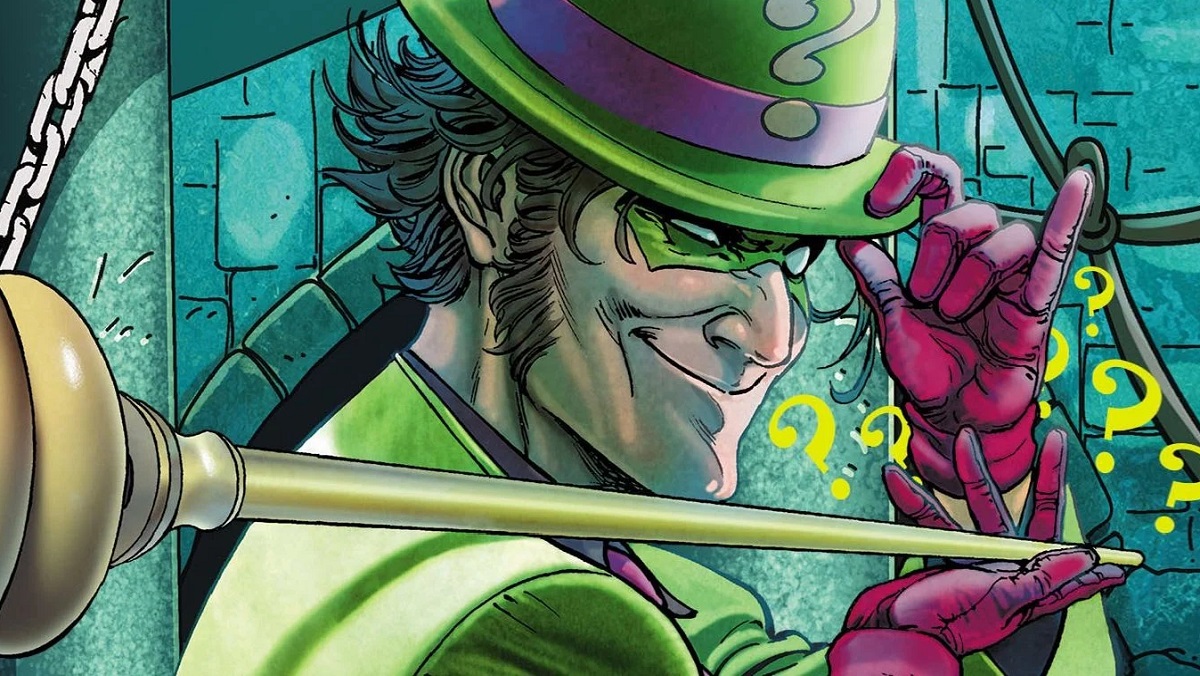
Like every comic book character in existence, The Riddler’s origins and backstory have received multiple tweaks over the decades, but unlike other major DCU characters, these weren’t retcons; rather, they were additions that added philosophical and psychological layers to his initially goofy characterization. Edward Nigma (yes, the pun is not lost on us), had always been obsessed with puzzles.
He was a brilliant student and possessed a very keen sense of curiosity and thirst for knowledge from a young age. He’d often sit at the feet of adults, peppering them constantly with questions; a habit that seemed to carry over into his academic life, much to the annoyance of everyone as depicted in DC’s annual story “Questions Multiple the Mystery”. When he was in the 6th grade, Edward’s teacher announced a puzzle-solving competition with an unspecified prize.
A young Edward saw this as his opportunity to get the attention he so desperately craved. He began breaking into his school after hours and practicing the puzzle to perfect his timing, and on the day of the competition, he finished it in 15 seconds, astonishing his peers and teachers. His reward would seal his fate: an awesome puzzle book and the attention of every bully in his school.
You see, his childhood was pock-marked with physical trauma at the hands of his father. He’d always been a smart kid and got grades that would normally make a parent’s chest swell up with pride. Ol’ Mr. Nigma was of suspicious stock however and concluded that Edward had cheated to get them, commencing a period of abuse that left his psyche permanently scarred. All the mistrust and mistreatment led to a single conclusion in his mind: intellect is superior to raw strength, and he would use his own mind to prove it.
Negative life experiences and dubious attention turned this would-be genius into a validation-hungry, puzzle-fixated maniac. He started out small; hoodwinking carnival-goers into playing an unsolvable puzzle that lined his pockets with enough money to get by. But soon, he grew bored, and emboldened by his successes, hatched a scheme that would see his name plastered on every screen and newspaper in Gotham City.
He targeted the ultimate puzzle-solvers in his quest to “reveal the truth”- law enforcement. He donned the persona of The Riddler and proceeded to toy with Gotham Police, embarking on his journey to criminal infamy, often flanked by his wild-and-willing assistants Query & Echo. His methods are complex and deceptive; the police weren’t even able to tell that the criminal was sending them clues leading to him for his first few felonies.
It was only when Batman got involved that they were able to uncover this information. Fuelled by an intellectually-matched adversary, The Riddler decided to make Batman his ultimate truth, designing elaborate death traps to put an end to Gotham’s Protector and “expose him”. Over the decades, he has teamed up with many rogues from Batman’s gallery but has almost always come up short of defeating the World’s Greatest Detective. Let’s take a look at some of the biggest storylines to feature his riddles.
Major Story Arcs
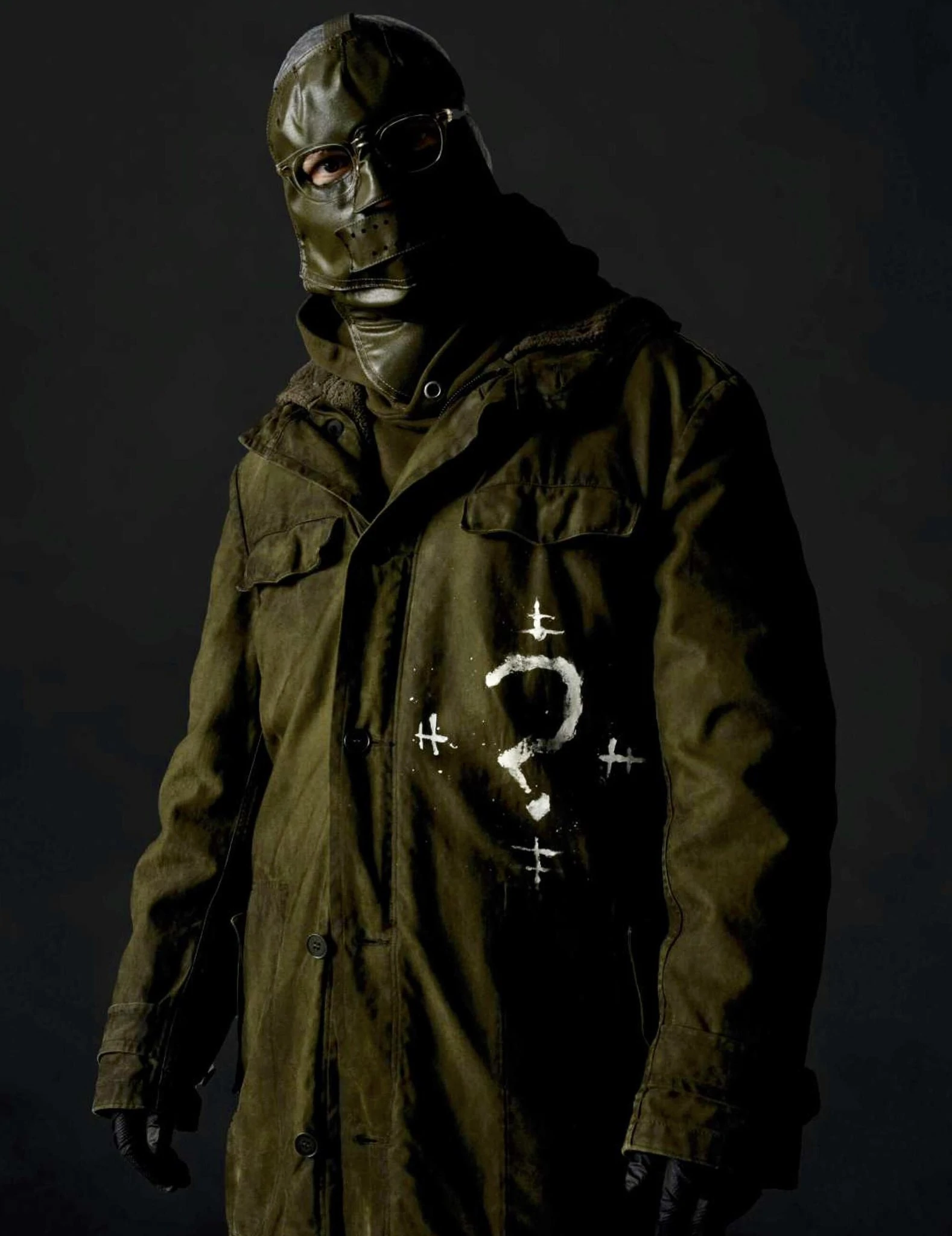
Despite not being one of Batman’s primary adversaries, The Riddler has become somewhat eponymous with the Caped Crusader thanks to fantastic character progression and some extremely well-received storylines. Riddler’s introduction to DC couldn’t have been more perfect, as he confounds Batman & Robin with his eclectic puzzles in their first encounter, which built to the now-iconic “maize” riddle that solidified his position as a worthy mental adversary for Bruce Wayne.
Of course, in the end, Batman solved the puzzle and made his escape, as the glass maze which he was trapped in was blown up by The Riddler, with the Prince of Puzzlers himself getting blasted away leaving a floating question mark in his wake. After two weeks of taunting our dynamic duo, he was finally apprehended and sent on his first trip to jail.
Now out on parole, he promptly resumed his criminal activities though he feigned reform for a good few issues, even working alongside Batman and helping him solve certain crimes. His deceptions were always discovered, though, and he invariably ended up in Arkham. Two of the most talked-about Riddler story arcs before the New 52 reboot have to be the one-shot “Riddler and the Riddle Factory” as well as the critically-lauded “Hush” storyline, where Jeph Loeb transformed the Riddler from a Jim Carrey meme to a life-threatening menace on par with first-tier Batman antagonists like Joker, Penguin & Poison Ivy.
“Riddler and the Riddle Factory” is a fun, light-hearted read: if your definition of fun & light-hearted includes a murderous game of riddles. “Scarface” Scarelli was a well-known mobster who operated in Gotham well before Bruce Wayne put on a menacing cowl. It was rumored that he had buried “treasures” somewhere underneath Gotham City, and the Riddler can’t say no to all that sweet cheddar cheese just lying around.
So he rounded up all known associates of Scarelli and threw them in a game show-themed death-trap to suss out the treasure’s location. 2003’s “Hush” gave Edward Nigma’s nefarious schemes a decidedly-darker tone. It was revealed that he had brain cancer, and he had used the Lazarus Pits to fix himself. But the Lazarus Pits heal you at a cost; that being temporary insanity. And yet somehow, mid-psychotic breakdown, an epiphany dawned upon The Riddler: the figured out Batman’s true identity.
He tried to offer the same to his envy-addled childhood friend Thomas Elliot, for a large sum of money of course but was rebuffed with a proposition that was particularly enticing for the Prince of Puzzlers. This led to the birth of Hush, who manipulated and turbo-charged his way to supervillain infamy by breaking down Batman’s spirit in 12 short issues.
It’s a fantastic series that explores unseen pockets of The Riddler’s personality and sets up his character’s aura perfectly for the New 52. After the re-boot, Edward Nigma got the distinction of being the entity that sealed Bruce Wayne’s transition into the superhero that is Batman. Zero Year is one of the best storylines (and origin stories, while we’re at it) to have been featured in a Batman title, and sees the Crowned Prince of Conundrums systematically take control of Gotham City by flooding the streets and changing its landscape from metropolitan to post-apocalyptic in a single night.
Still, in the first half-decade of crime-fighting, Bruce Wayne must step up and embrace the mantle of Batman if he wants to save his city. It’s a fascinating read that showcased The Riddler’s genius-level intellect and what he can really do if he sets his mind to a task. We’d seen this before, during his stint as a reformed-yet-obnoxious detective post-Hush, but Year Zero was the enigmatic showcase needed to bolster The Riddler’s status as a top-tier Batman baddie.
Though he’s spent much of his time in Arkham since then, as DC’s Infinite Frontier continues to gradually unravel, we can’t wait to see what other riddles the main-continuity Riddler has for us.
Alternate Versions
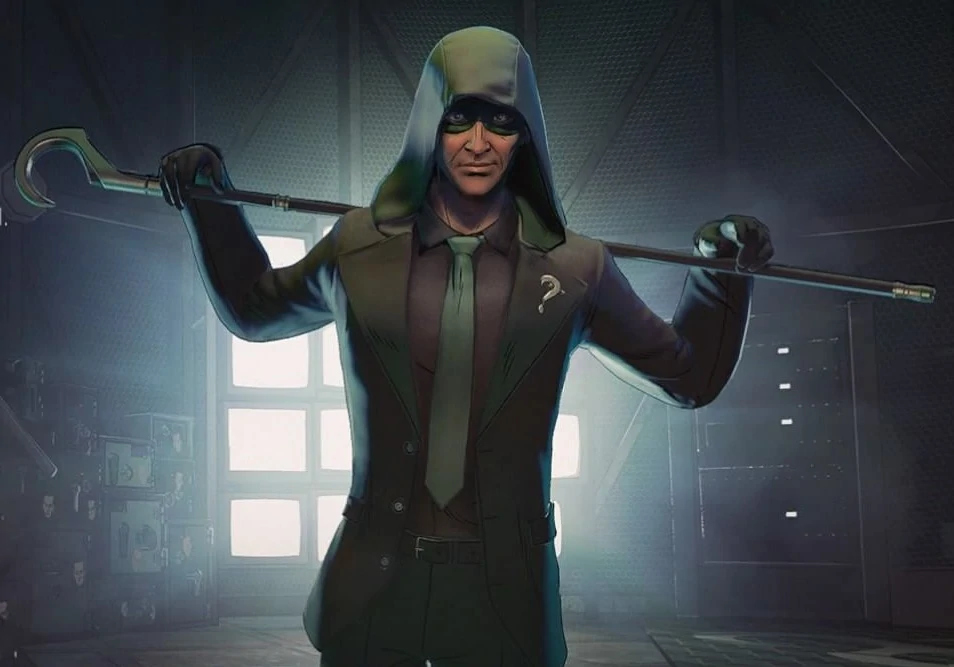
Of course, no major comic book character can go mainstream and not have alternate versions of them existing in parallel universes. The Riddler has at least 3, and another that comes from the Marvel-DC crossover-fiesta that is Amalgam Comics. This variant of Riddler is called Big Question and is a hybrid of him and Marvel’s Kingpin. Named Edward Nigma Fisk, Big Question is an obscenely-wealthy and monstrous-huge man who is obsessed with foiling his own felonies by leaving clues for superheroes to discover.
While we find it hard to believe that any iteration of Wilson Fisk would be willing to give up anything he acquires, let alone willingly, we must admit that green is a good color on him. The next variant comes from DC’s Antimatter Universe. This version is named Edward Nashton, calls himself The Quizmaster, and is a superhero that protects his earth from the Crime Syndicate of America, an alternate and evil version of the Justice League of America.
However, at the same time that the prime Edward was reforming his ways and becoming a law-abiding detective, The Quizmaster began losing his grip on sanity as he tried (and failed) repeatedly in reviving his dead daughter. Now going by Enigma, he decided to become a supervillain and do anything necessary to bring her back to life. Thankfully, Enigma was stopped before he could do something reality-breaking and resumed his superhero duties alongside his daughter, now operating as the Void Hound.
There was another Enigma in DC continuity, but this one’s origins were decidedly more…hilarious. During the Emperor Joker storyline where Joker steals Mr. Myxzptlk’s reality-changing powers to remake the universe in his own image, he also creates a version of the Riddler called Enigma, who has been described as “an irrational man of mystery”.
After this version of Riddler realizes what the Joker is up to, he sides with the JLA in an attempt to stop him but fails, as the Joker destroys him, the JLA, and the universe at large. A final variant of Edward Nigma exists on Earth-3, and is a superhero, much like his Antimatter Universe counterpart. Also called The Riddler, this variant has his own version of the Bat-Family- the Riddler Family- is romantically involved with Three-Face, and is the stepfather of Duela Dent, the daughter of Earth-3’s version of Joker, aka Jokester.
Riddler’s Abilities
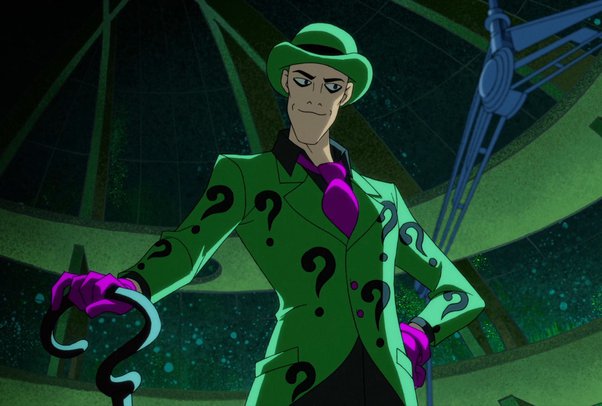
Much like most of Batman’s rogue’s gallery, The Riddler has no innate superpowers but uses his enhanced human capabilities to augment his vile schemes. By far his most powerful weapon is his brain.
He is a puzzle-master extraordinaire, capable of inhuman levels of lateral thinking and deductive reasoning that have allowed him to outwit Batman on more than a few occasions, especially during his time as a reformed detective. The Riddler’s obsession with mind games stems from childhood trauma and a deep desire to “always tell the truth”. He expresses both by crafting elaborate, often-fatal riddles that allow him to keep his enemies on their toes without technically lying to them.
He’s extremely proud of himself, too, as Batman notes that the Riddler ‘exhibits personality disorders consistent with a fanatic narcissist crossed with severe obsessive compulsion’. That’s one of the reasons why he initially hated his tag-team partner Cluemaster, calling gimmick-infringement on his shtick of leaving indicative “clues” as opposed to Riddles.
But eventually, they squashed the beef and formed a pretty formidable duo. As a lifelong admirer of Harry Houdini, The Riddler has trained to become an escape artist himself and can break out of any predicament he finds himself in, using this knowledge to stay on the run and reverse-engineer his signature traps. While he doesn’t know any specific form of martial arts, he’s more than capable of handling himself in hand-to-hand combat, thanks to his trusty cane which has a multitude of gadgets and devices concealed within.
He can project holograms, bypass security systems, and cause electrical blasts with them, helping enhance his chances of survival. He also has an array of gimmicked weapons that give him a tactical advantage that are clearly meant to mock Batman; like the Question Mark grappling gun, exploding jigsaw puzzle pieces, and the Riddlermobile, complete with a “???” on the license plate. His ability to use these devices and equipment in conjunction with his genius-level intellect is what makes him an all-time great Batman villain.
Riddler’s Appearances in Movies, Animated Shows & Live-Action TV series
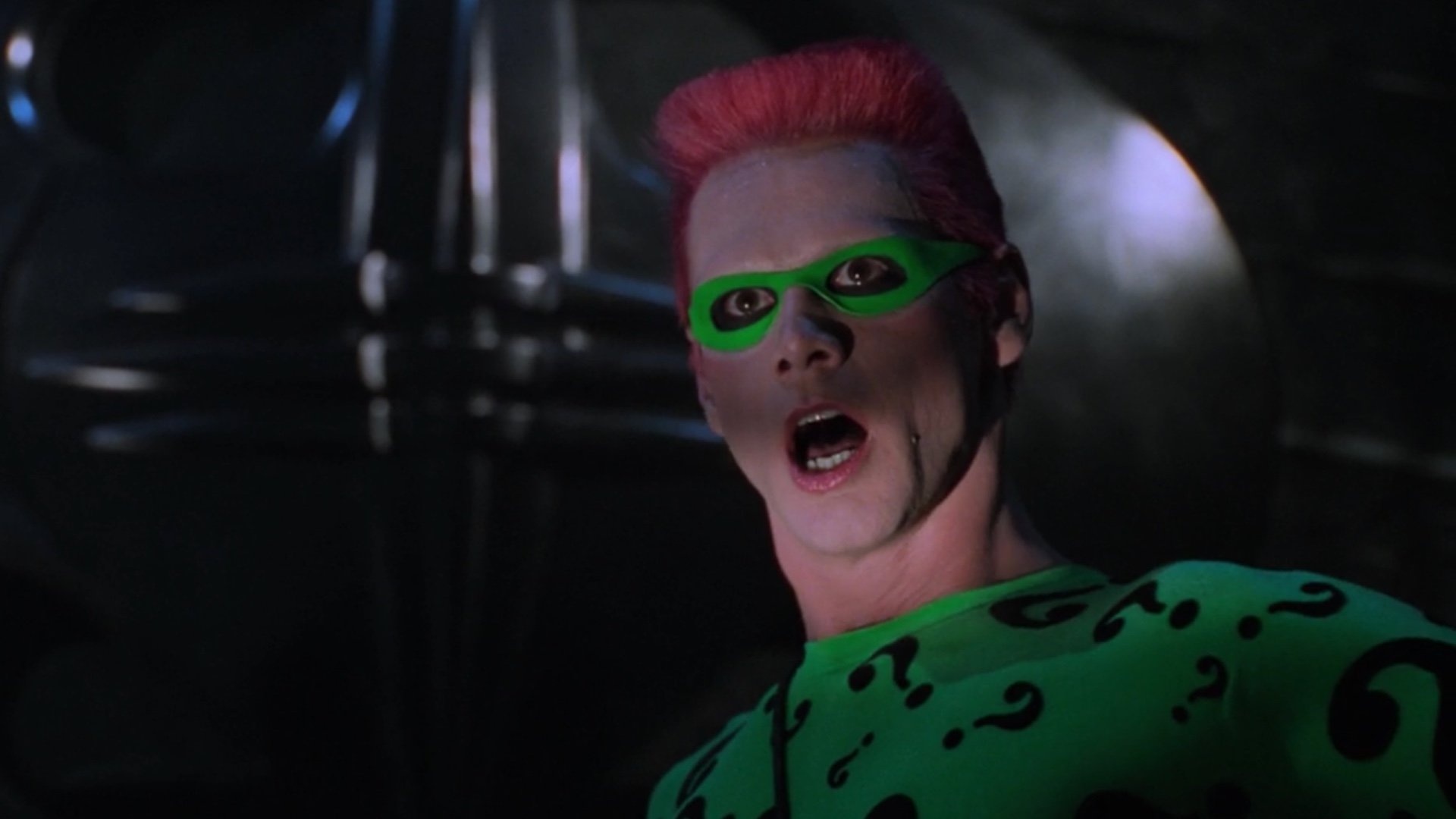
Being one of the defining supervillains for Batman’s character itself, Riddler has been adapted over 17 times for multimedia purposes, ranging from movies to TV shows (both cartoon and live-action) as well as multiple games under the Batman: Arkham series. Frank Gorshin was single-handedly responsible for the character’s explosive popularity; The Riddler had appeared in 2 issues in 3 decades before the 1966 Batman live-action TV series came out.
Over the course of 9 episodes and one feature film, Gorshin transformed the character from a unitard-wearing puzzle-spewing nuisance to a genuinely unsettling menace whose in-lore presence has since been dramatically expanded upon. So much of the Riddler’s current appearance is thanks to Gorshin: the iconic green question-marked business suit and purple derby hat that has since become his standard wardrobe.
He towed the line between calmness and crazed mania so perfectly that Heath Ledger based his portrayal of the Joker on Gorshin’s Riddler. Another iconic portrayal of Edward Nigma comes from legendary comedian Jim Carrey, but we’ll let you decide whether it’s for the right reasons or the wrong ones.
Personally, we thought that Carrey’s OTT take on The Riddler fit his natural charisma and sense of humor like a glove, and was a major highlight on an otherwise disastrous silver screen outing for the Batman franchise. Apart from these live-action adaptations, Riddler’s presence in animations has also been quite prolific, ranging all the back to Super Friends, Batman: The Animated Series & Batman Beyond, all the way up to the recent Young Justice cartoons and 2019’s Batman: Hush which has one of the bolder interpretations of Jeph Loeb’s classic series.
Though he’s not a major antagonist in any of the titles, Riddler is an integral in-verse presence for the video game series Batman: Arkham, frequently being associated with data packets that help Bruce out with his investigations.
As you can see, Riddler has enjoyed 50+ years of mainstream popularity, and that comes with its pros and cons; the pros being the character hasn’t become saturated despite its longevity, and cons being the Joel Schumacher-sized baggage of being in Batman Forever; but that is something that the character might not have to carry around for too long.
Riddler is the Major Villain In Upcoming Movie The Batman (2022)
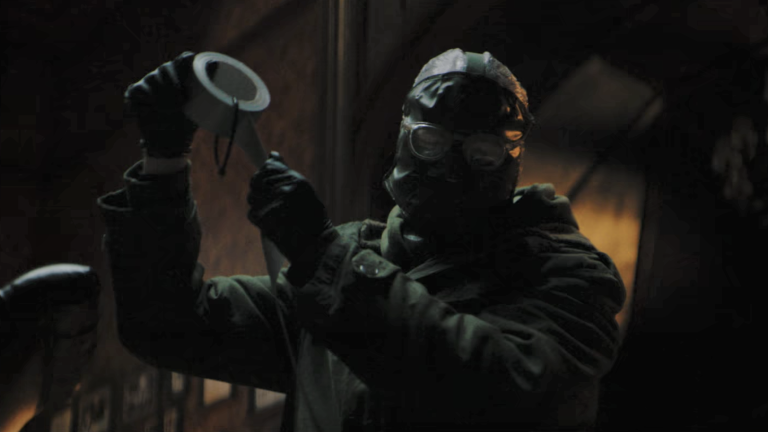
On August 23, 2020, DC fans all across the world gripped their cellphone screens with hushed exhilaration. Matt Reeves teased the film at DC’s virtual FanDome event, and the clip immediately set the internet ablaze. Tuned to a haunting rendition of Nirvana’s Something in the Way submerged within Michael Giacchino’s composed score, it gave us the first look at Robert Pattinson’s Dark Knight, whose on-screen trajectory is poised to be somehow darker than the Nolan-verse.
So far, we’ve seen Zoe Kravitz’s Catwoman and Collin Firth’s Penguin mucking it up with a pre-JLA vigilante Bruce Wayne, and at the center of it all is the FaceTiming, duct-tape wielding, ski-mask aficionado that is Paul Deno’s Riddler. From the few trailers and viral marketing sites we’ve seen so far, Reeves seems to be pulling inspiration from a lot of different classic Batman stories, with Zero Year serving as its foundational base.
The costume design for Deno’s Riddler and additional information scoured from the trailers suggests to us that this movie is going to take the Hush route and then spin it to fit Reeves’ narrative, but only time will tell. Needless to say, we’re drooling with anticipation.
Ever since Warner Brother’s executives ruined the Snyderverse and Ben Affleck’s Batman with it, we’ve been clamoring for someone to come around and do justice to the character once again. Matt Reeves has specifically stated that he wants to explore Batman’s moniker of being the “World’s Greatest Detective” with his vision, and who better to foil his deductions, than the Prince of Puzzlers himself?
The Batman releases in the US on March 4th, 2022, and we’ll be spending our time sharpening our minds and practicing our riddle-solving skills till then to keep up with Gotham’s crazed genius and his diabolical plots.
